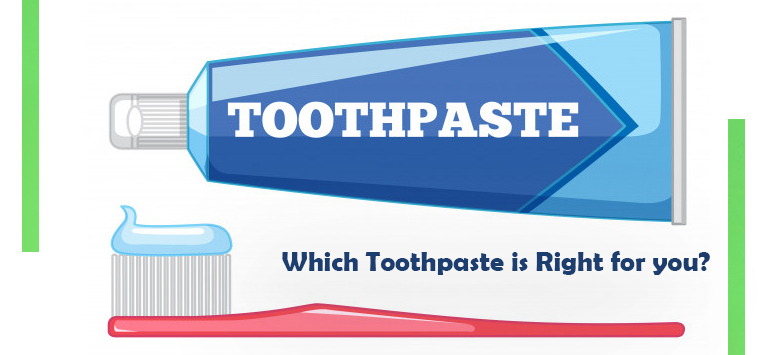
Which Toothpaste is Right for you?
Daily cleaning your teeth twice a day is a good and simple habit, but the most difficult thing is choosing the right toothpaste. A number of different types of brands are available which makes it confusing to choose the right one.
It’s okay, but we can understand it by knowing what are the ingredients present in the toothpaste which makes the task easier.
Know what is toothpaste made of
Here are some of the ingredients present in toothpaste
Fluoride
This is the key ingredient that prevents the decay of tooth and gum diseases by eliminating plaques and protecting our teeth from cavities. Toothpaste should contain at least 1000 ppm (parts per million) fluoride.
Abrasives
Some mild abrasives and calcium carbonate are also a key ingredient. They wash away debris and stains when you brush your teeth.
Flavor
When you brush your teeth, you will get a fresh feeling in your mouth. This is done by flavoring agents in the toothpaste. Artificial sweeteners such as sorbitol or saccharin are used by many brands to replace sugar. These types of ingredients don’t provide a health benefit to your teeth.
Detergent
Ingredients such as sodium lauryl sulfate are the foaming agents in your toothpaste. Some of the people are sensitive to sodium lauryl sulfate, which causes abrasions or irritation. If you often experience mouth ulcers or sores, choose toothpaste without sodium lauryl sulfate.
Humectants and thickeners
To produce a creamy, uniform, and smooth structure, these ingredients are used mainly. They help hold water and tie up the toothpaste together. Thickening agent of the toothpaste is cellulose while sorbitol and glycerol are few common humectants.
Solving common toothpaste claims
Anticavity
Toothpaste which contains fluoride almost prevents tooth decay. Anticavity kinds of toothpaste contain more fluoride in their preparation. Some of the prescribed anticavity toothpaste have even more fluoride levels.
Tartar control
If plaque is not cleaned by proper brushing and flossing it gets harder and then turns into tartar, which causes discoloration and stains. Tetrasodium pyrophosphate is a key ingredient that helps to control tartar and reduce plaque buildup. If tartar is formed, it is better to visit a dentist to remove it.
Whitening
Like anticavity toothpaste, they also contain abrasives (a common ingredient) at a bit higher level. These abrasives assist stain removal on the tooth’s enamel but won’t whiten them.
Desensitizing
Whenever people suffer from sharp pain when they have something sweet, cold, or hot, desensitizing or sensitive toothpaste can help relive those sensitivities of the nerves around your teeth. They also help in reducing the pain, which is caused due to sensitivity.
Enamel repair
Your teeth have the natural ability to repair enamel, but tooth decay can slow down its process. Enamel repair toothpaste consists of minerals which help to rectify the damage. As said above, toothpaste with a 1000 ppm fluoride rate can help restore enamel.
Natural alternatives
Like other self-care products, toothpaste also contains various natural brands. Some toothpaste may be available without SLS and fluoride as they are replaced with baking soda and activated charcoal. Baking soda is typically less in abrasive and charcoal is used as a whitening agent. Some brands have cinnamon, aloe vera, and natural oils for various dental benefits.
Conclusion
Mostly all toothpaste works for you unless you have some oral issues which require a recommended brand. The most important thing is brushing twice a day, flossing, and regular dental visits.










